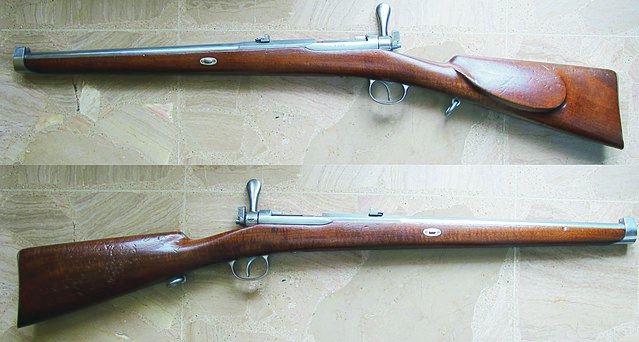
(Above) The Cavalry Variant of the Dreyse Rifle. Photo Courtesy of Jadechat.
We’ve covered a lot of different guns in our Historical Firearms series. However, nearly all of these weapons have been at least semi-modern. That’s about to change, folks! In this entry of Historical Firearms, we’re going to take a look at a gun that’s nearly 200 years old: the Dreyse Rifle needle gun.
What is the Dreyse Rifle?
Let’s rewind – really far back. The year is 1841. The Seventh Coalition had defeated Napoleon about 20 years before, resetting the balance of power in Europe. But far from stifling conflict, this led to a power vacuum that the Great Powers of Europe raced to exploit.
One of those powers was the Kingdom of Prussia. At the time, the Prussians were one of the leading German states. As one of the biggest powers (with the largest army), the Prussians were salivating as they looked over the rest of the German states. They were ripe for conquest, but first, the Germans needed the weapons to do so.
German inventor Johann Nikolaus von Dreyse had been working on just such a weapon since the 1830s. His design included one of the first widely-used firing pins in history. After the German army adopted the rifle, they dubbed it the “leichtes Perkussionsgewehr Modell 1841” (light percussion rifle model 1841 in English). However, it was more commonly known by the name “Dreyse Rifle” after its creator.
Dreyse Rifle Design
While the original Dreyse Rifle design was a muzzleloader, Dreyse himself updated the design to make it a breech-loading firearm. It was one of the first firearms to ever use this method of action. To load it, a shooter would open the break and insert a paper cartridge. This cartridge held black powder, a percussion cap, and a 15.4 mm bullet.
Then, the operator would close the breech. It was then ready to fire. By pulling the trigger, the needle would shoot forward and hit the percussion cap, igniting the powder in the cartridge and forcing it forward through the barrel. An experienced operator could fire the gun between 6 and 12 times per minute. It offered an advantage over muzzle-loaders, since soldiers could reload it while kneeling.
The Dreyse Rifle in Combat
Using the Dreyse Rifle, the Prussian Army eventually unified all of Germany under the Kaiser. It saw combat against Denmark, and notably against the Austrians (another powerful German-speaking state) in the Austro-Prussian War. But it would become famous during the Franco-Prussian War where, in spite of some limitations, the Germans conquered France and declared the First German Empire.
Dreyse Rifle Specs
- Caliber: 15.4 mm paper cartridge
- Barrel: 36 inches
- Action: breech-loading, bolt-action
- Rate of Fire: 6-12 rounds per minute, depending on operator
- Capacity: single-shot
- Effective Range: 200 m
- Muzzle Velocity: 1,000 ft/s
What is the next historical firearm you want us to cover? Let us know on social media or at marketing@sdi.edu.



